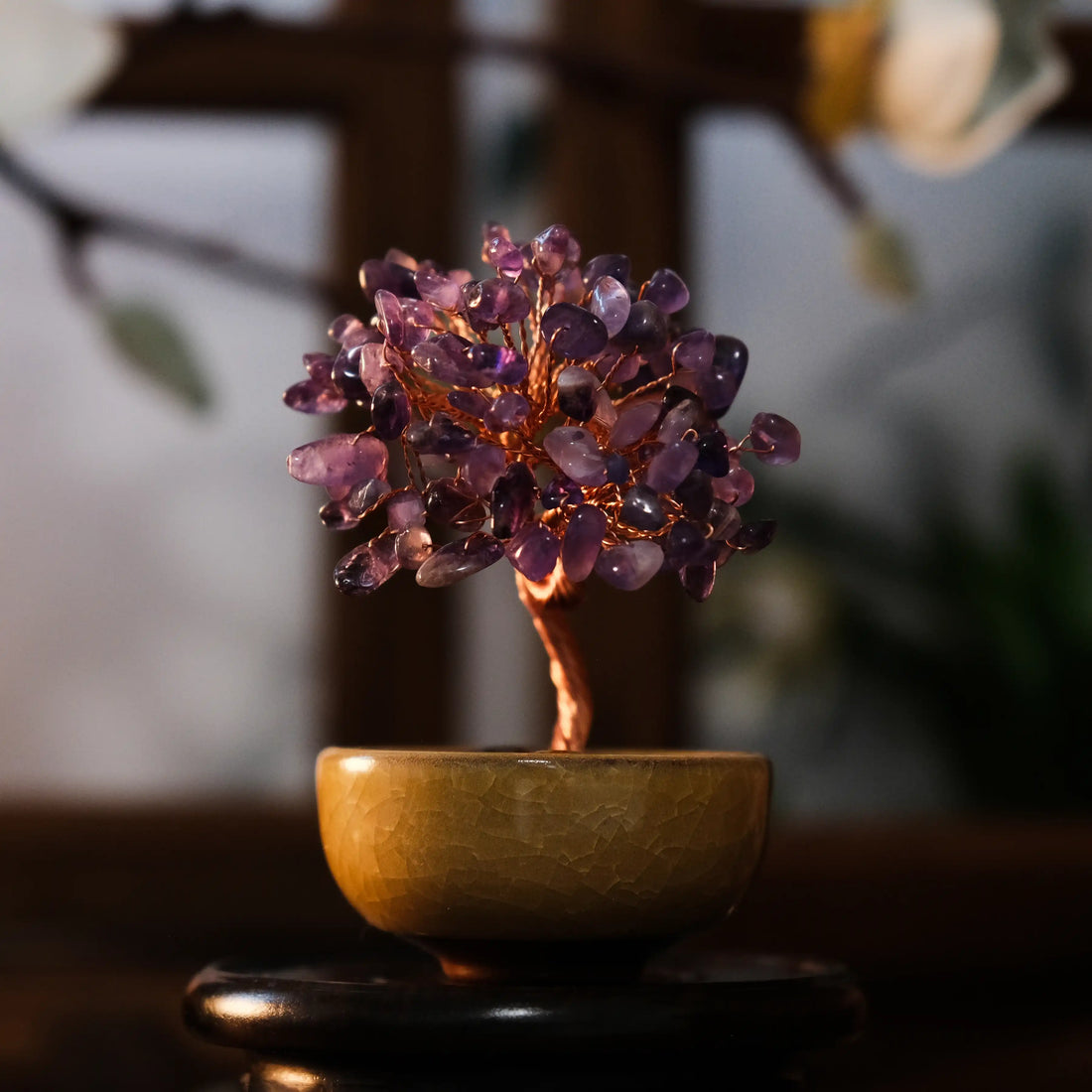
The Spiritual Meaning of Amethyst in Buddhism and Western Spirituality
Share
Introduction
Amethyst, with its radiant violet hue and crystalline beauty, has long been regarded as more than just a gemstone. Across cultures, it has been associated with purity, wisdom, and spiritual awakening. In Buddhism, amethyst is often connected with meditative practice and the cultivation of a clear mind, while in Western spirituality it is seen as a stone of healing, intuition, and protection. This article explores the different meanings of amethyst in Buddhism and Western traditions, citing classical references and modern spiritual practices.
1. The Meaning of Amethyst in Buddhism
1.1 Wisdom and Clarity of Mind
In Buddhist teachings, the color purple is often associated with purity and noble qualities. The Mahāprajñāpāramitā-śāstra (大智度论, The Great Treatise on the Perfection of Wisdom) compares the Dharma to a bright jewel that dispels the darkness of ignorance. Amethyst, with its transparent and calming appearance, has been regarded as a supportive aid for meditation, helping practitioners purify thoughts and cultivate wisdom.
1.2 Protection and Spiritual Support
Amethyst mala beads (amethyst meditation malas) are commonly used in chanting and recitation practices. Wearing or using them during prayer is believed to provide spiritual focus and symbolize the protective power of the Dharma.
1.3 Symbol of Compassion and Insight
In some Mahayana traditions, amethyst is linked with the qualities of Avalokiteśvara (Guanyin), embodying compassion and purity. Amethyst malas or bracelets may be placed on altars, symbolizing both wisdom and compassion.
2. The Meaning of Amethyst in Western Spirituality
2.1 The Stone of Sobriety and Protection
The word amethyst originates from the Greek amethystos, meaning “not intoxicated.” Ancient Greeks believed that wearing amethyst could protect them from drunkenness and overindulgence, making it a symbol of clarity and rationality.
2.2 Spiritual Awakening and Higher Consciousness
In modern Western spirituality and New Age practices, amethyst is closely associated with the third eye chakra and the crown chakra. It is said to enhance intuition, spiritual awareness, and access to higher states of consciousness. Amethyst crystals are often placed on the forehead or crown during meditation to facilitate deeper inner work.
2.3 Emotional Healing and Balance
Amethyst bracelets and crystals (amethyst bracelet for meditation and healing) are also valued for their calming energy. Many believe that amethyst can soothe anxiety, balance emotions, and protect against negative energy, serving as a gentle tool for emotional healing.
3. Comparison Between Buddhism and Western Spirituality
- Shared themes: Both traditions emphasize amethyst as a stone of clarity, mindfulness, and meditation.
- Key differences:
- In Buddhism, the focus is on wisdom, compassion, and the jewel as a support for Dharma practice.
- In Western spirituality, the focus is on healing properties, energy alignment, and personal transformation.
4. Modern Applications
-
For Buddhist Practitioners
Amethyst mala beads are used in chanting sutras, reciting mantras, or meditative prayer, serving as both a practical tool and a symbolic reminder of clarity. -
For Western Spiritual Seekers
Amethyst crystals are placed in meditation spaces or worn as jewelry to support intuition, calmness, and spiritual protection. -
Cross-Cultural Appeal
Today, amethyst bracelets and malas are embraced across cultures—not only for their beauty but also for their shared symbolism of inner peace and wisdom.
Conclusion
In Buddhist traditions, amethyst is revered as a symbol of wisdom, clarity, and spiritual practice, while in Western spirituality it is celebrated for its healing properties and its role in awakening higher consciousness. Though the interpretations differ, both traditions highlight the ability of amethyst to guide individuals toward inner peace and spiritual growth. More than a gemstone, amethyst stands as a bridge between cultures, embodying universal human aspirations for clarity, compassion, and harmony.
